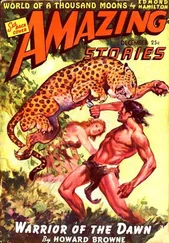The reefs themselves, blessedly clean, are lush with table corals, plate corals, lobe corals, brain corals, and flower corals. At times, the walls of coral nearly disappear behind colored clouds of smaller grazing fish. The paradox that this expedition has confirmed is that their sheer abundance is caused by the hordes of hungry predators that devour them. Under such predation pressure, small herbivores reproduce even faster.
“It’s like when you mow your lawn,” explains Alan Friedlander. “The more you crop it, the more quickly grass grows. If you let it go awhile, the growth rate levels off.”
No chance of that happening with all of Kingman’s resident sharks. Parrotfish, whose beak-like incisors evolved to gnaw the most tenacious coral-choking algae, even change sex to maintain their sizzling reproduction rates. The healthy reef keeps its system in balance by providing nooks and crevices in which small fish hide long enough to breed before becoming shark food. As a result of the constant conversion of plant and algae nutrients into short-lived little fish, the long-lived apex predators end up accumulating most of the biomass.
The expedition data would later show that fully 85 percent of the live weight at Kingman Reef was accounted for by sharks, snappers, and other carnivorous company. How many PCBs may have migrated up the food chain and now saturate their tissues is fodder for a future study.
Two days before the expedition’s scientists depart Kingman, they steer their dive boats to the twin crescent islets heaped atop the northern arm of the boomerang-shaped reef. In the shallows, they find a heartening sight: a spectacular community of spiny black, red, and green sea urchins, robust grazers of algae. A 1998 El Nino temperature fluctuation, ratcheted even higher by global warming, knocked out 90 percent of the sea urchins in the Caribbean. Unusually warm water shocked coral polyps into spitting out friendly algal photosynthesizers that live in tight symbiosis with them, trading just the right balance of sugars for ammonia fertilizer the corals excrete back, and also providing their color. Within a month, more than half the Caribbean reefs had turned to bleached coral skeletons, now coated with slime.
Like corals worldwide, the ones at the Kingman islets’ edges also show bleaching scars, but fierce grazing has kept invasive algae at bay, allowing encrusting pink corallines to slowly cement the wounded reef back together. Wading gingerly around all the sea urchin spikes, the researchers climb ashore. Within a few yards, they’re on the windward side of the clamshell rubble, where they get a shock.
From one end to the other, each isle is carpeted with crushed plastic bottles, parts of polystyrene floats, nylon shipping ties, Bic lighters, flip-flops in various states of ultraviolet disintegration, plastic bottle caps of assorted sizes, squeeze-tubes of Japanese hand lotion, and a galaxy of multicolored plastic fragments shattered beyond identity.
The only organic detritus is the skeleton of a red-footed booby, chunks of an old wooden outrigger, and six coconuts. The following day, the scientists return after their final dive and fill dozens of garbage bags. They are under no illusions that they have returned Kingman Reef to the pristine state it was in before humans ever found it. Asian currents will bring more plastic; rising temperatures will bleach more corals—possibly all of them, unless coral and its photosynthetic resident algal partner can evolve new symbiotic agreements quickly.
Even the sharks, they now realize, are evidence of human intervention. Only one that they’ve seen in Kingman all week was a behemoth longer than six feet; the rest are apparently adolescents. Within the past two decades, shark finners must have been here. In Hong Kong, shark fin soup commands up to $100 per bowl. After slicing off their pectoral and dorsal fins, finners throw mutilated sharks, still alive, back into the sea. Rudderless, they sink to the bottom and suffocate. Despite campaigns to ban the delicacy, in less remote waters an estimated 100 million sharks die this way every year. The presence of so many vigorous young ones, at least, gives hope that enough sharks here escaped the blade to revive the population. PCBs or not, they look to be prospering.
“In a year,” observes Enric Sala, watching their spotlit frenzy that night from the rail of the White Holly , “humans take 100 million sharks, while sharks attack maybe 15 people. This is not a fair fight.”
Enric Sala stands on the shore of Palmyra Atoll, waiting for a turbo-prop Gulfstream to land on the airstrip built here the last time the world was officially at war, to take his expedition team back to Honolulu—a threehour flight. From there, they’ll disperse across the globe with their data. When they meet again, it will be electronically, and then in peer-reviewed papers they will coauthor.
Palmyra’s soft green lagoon is pure and lucid, its tropical splendor patiently erasing crumbled concrete slabs where thousands of sooty terns now roost. The tallest structure here, a former radar antenna, has rusted in half; within a few more years, it will disappear completely among the coconut palms and almond trees. If all human activity suddenly collapsed along with it, Sala believes that quicker than we’d expect, the reefs of the northern Line Islands could be as complex as they were in the last few thousand years before they were found by men bearing nets and fishhooks. (And rats: probably the onboard, self-reproducing food supply for Polynesian mariners who dared cross this endless ocean with only canoes and courage.)
“Even with global warming, I think reefs would recover within two centuries. It would be patchy. In some places, lots of large predators. Others would be coated with algae. But in time, sea urchins would return. And the fish. And then the corals.”
His thick dark eyebrows arch beyond the horizon to picture it. “In 500 years, if a human came back, he’d be completely terrified to jump in the ocean, because there would be so many mouths waiting for him.”
Jeremy Jackson, in his sixties, was the elder ecological statesman on this expedition. Most here, like Enric Sala, are in their thirties, and some are younger graduate students. They are of a generation of biologists and zoologists who increasingly append the word conservation to their titles. Inevitably, their research involves fellow creatures touched, or simply mauled, by the current worldwide peak predator, their own species. Fifty more years of the same, they know, and coral reefs will look very different. Scientists and realisrs all, yet their glimpse at how inhabitants of Kingman Reef thrive in the natural balance to which they evolved has only hardened their resolve to restore equilibrium—with humans still around to marvel.
A coconut crab, the world’s largest land invertebrate, waddles by. Flashes of pure white amid the almond leaves overhead are the new plumage of fairy tern chicks. Removing his sunglasses, Sala shakes his head.
“I’m so amazed,” he says, “by the ability of life to hang on to anything. Given the opportunity, it goes everywhere. A species as creative and arguably intelligent as our own should somehow find a way to achieve a balance. We have a lot to learn, obviously. But I haven’t given up on us.”
At his feet, thousands of tiny, trembling shells are being resuscitated by hermit crabs. “Even if we don’t: if the planet can recover from the Permian, it can recover from the human.”
With or without human survivors, the planet’s latest extinction will come to an end. Sobering as the current cascading loss of species is, this is not another Permian, or even a rogue asteroid. There is still the sea, beleaguered but boundlessly creative. Even though it will take 100,000 years for it to absorb all the carbon we mined from the Earth and loaded into the air, it will be turning it back into shells, coral, and who knows what else. “On the genome level,” notes microbiologist Forest Rohwer, “the difference between coral and us is small. That’s strong molecular evidence that we all come from the same place.”
Читать дальше











